- FREE SHIPPING ON PURCHASE OF $50 OR MORE
- 30% OFF ENTIRE PURCHASE (EXCLUDES GIFT CARDS)
- FREE SHIPPING ON PURCHASE OF $50 OR MORE
- 30% OFF ENTIRE PURCHASE (EXCLUDES GIFT CARDS)
- FREE SHIPPING ON PURCHASE OF $50 OR MORE
- 30% OFF ENTIRE PURCHASE (EXCLUDES GIFT CARDS)
- FREE SHIPPING ON PURCHASE OF $50 OR MORE
- 30% OFF ENTIRE PURCHASE (EXCLUDES GIFT CARDS)
- FREE SHIPPING ON PURCHASE OF $50 OR MORE
- 30% OFF ENTIRE PURCHASE (EXCLUDES GIFT CARDS)
- FREE SHIPPING ON PURCHASE OF $50 OR MORE
- 30% OFF ENTIRE PURCHASE (EXCLUDES GIFT CARDS)
Skin
Delicate, translucent, prone to dryness and cool to the touch
Mind
Creative, enthusiastic, quick thinker
Body
Slender, light, flexible
Appetite
Irregular hunger and digestion
Temperament
Peaceful, nurturing, patience
Energy
High bursts of energy, but can fluctuate
Emotions
Variability in mood
Preferences
Prefers warmth, a grounding environment, and comforting foods

Your Personalized Recommendations
Vata skin craves hydration and care to counteract its natural dryness. A tailored skincare routine designed with time-tested Ayurvedic rituals provides the nourishment and moisture your skin needs. Our products focus on hydration, repair, and protection to address the unique challenges of Vata-dominant skin, such as dryness, flakiness, and sensitivity.

Replenish Your Skin with Ayurvedic Excellence
Every product in your routine is enriched with Ayurveda's timeless wisdom, designed to balance Vata dosha through hydrating botanicals and soothing herbs. These carefully selected natural ingredients work together to restore moisture and enhance the health and radiance of your skin.
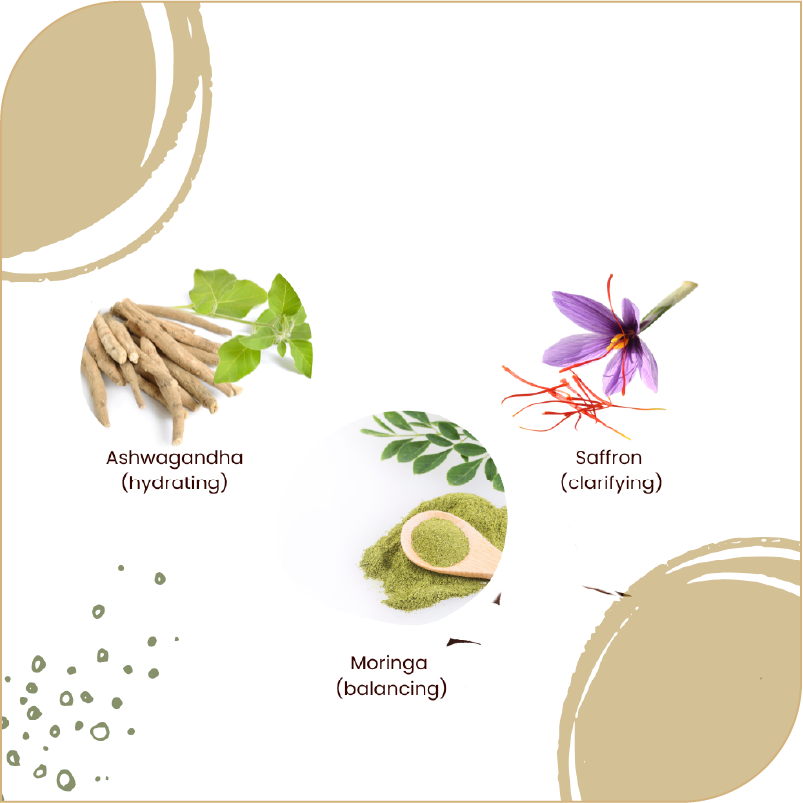
Face Cleanser Ingredients
Ashwagandha
Calms and revitalizes stressed skin
Moringa
Rich in nutrients to nourish and purify
Saffron
Brightens and evens skin tone
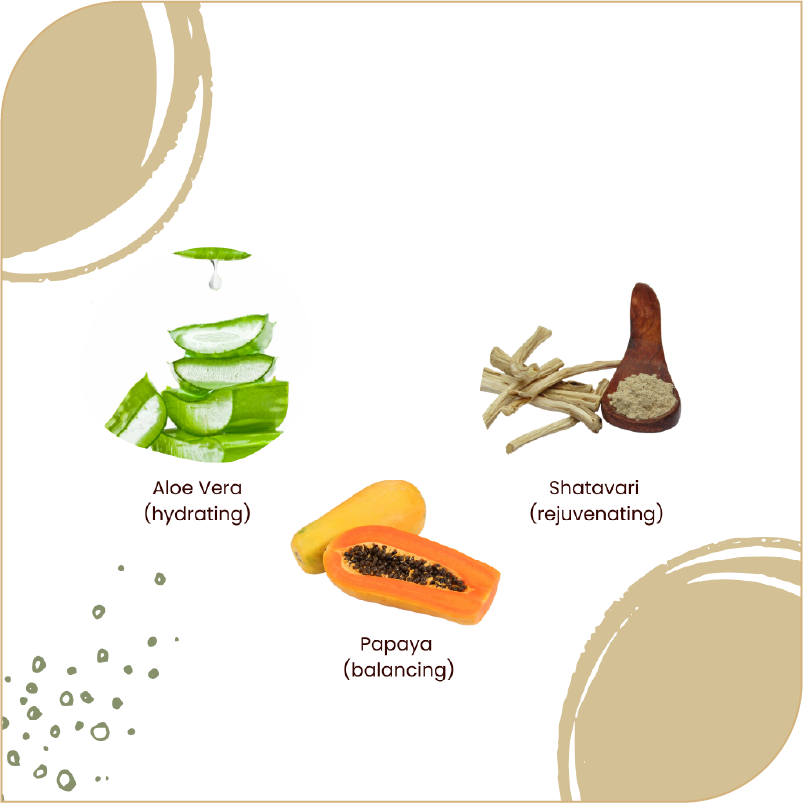
Face Scrub Ingredients
Aloe Vera
Soothes and hydrates during exfoliation
Shatavari
Deeply nourishes and supports skin renewal
Papaya
Gently exfoliates and promotes a radiant glow
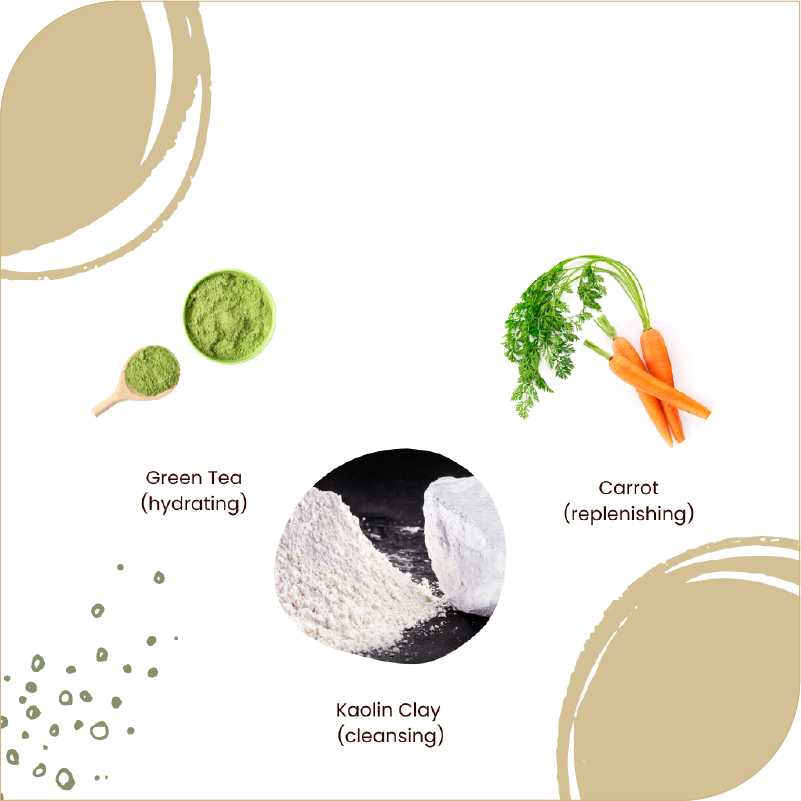
Face Mask Ingredients
Green Tea
Packed with antioxidants to refresh and rejuvenate
Carrot
Hydrates and supports skin elasticity
Kaolin Clay
Purifies and detoxifies without causing dryness
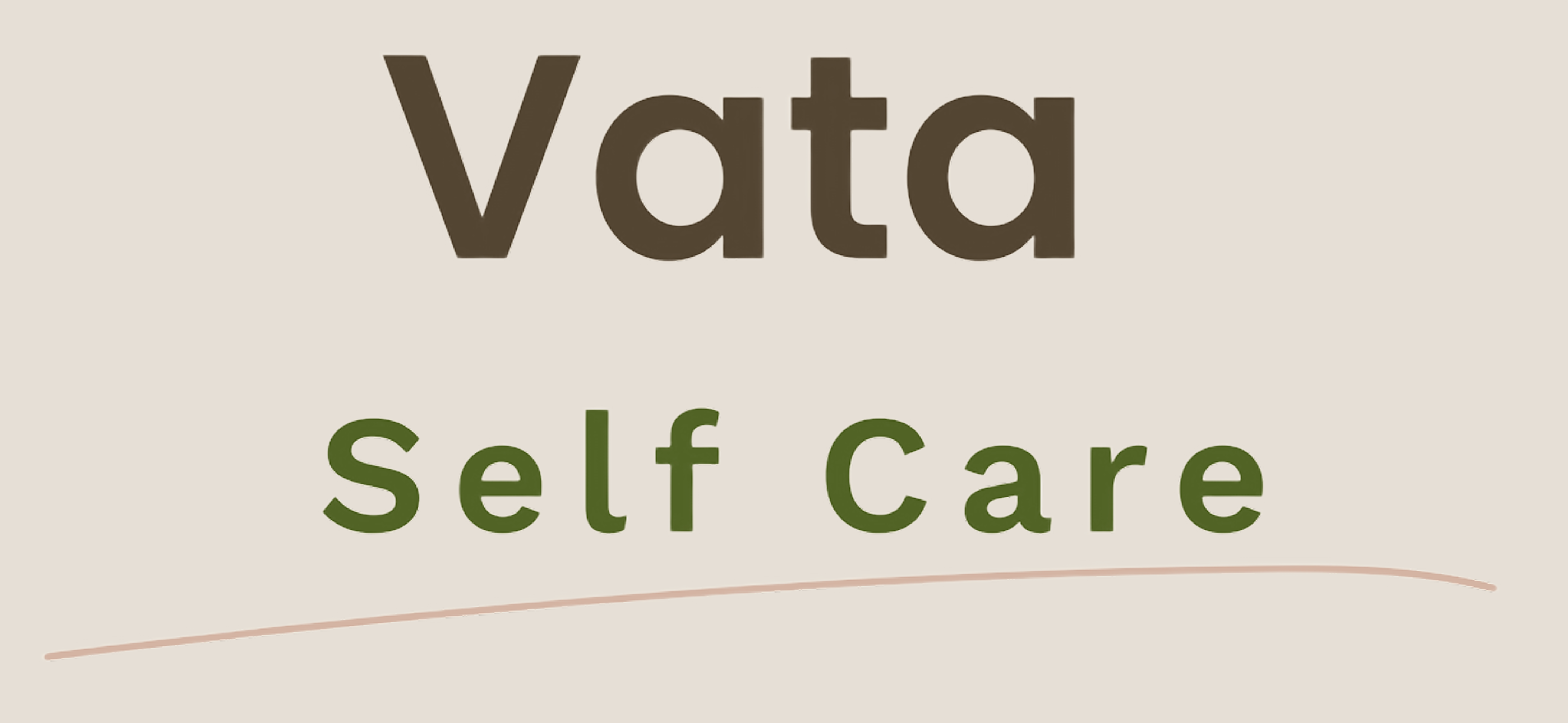
Vata Balancing Guide

Vata Lifestyle Tips
Ground Your Mind, Body, and Soul
Balance Vata’s cold, dry, and light qualities with warmth, hydration, and grounding rituals. A daily routine (dinacharya) helps regulate your internal clock. Waking, sleeping, and eating at consistent times fosters alignment with natural rhythms. Incorporating calming practices brings stability and balance.
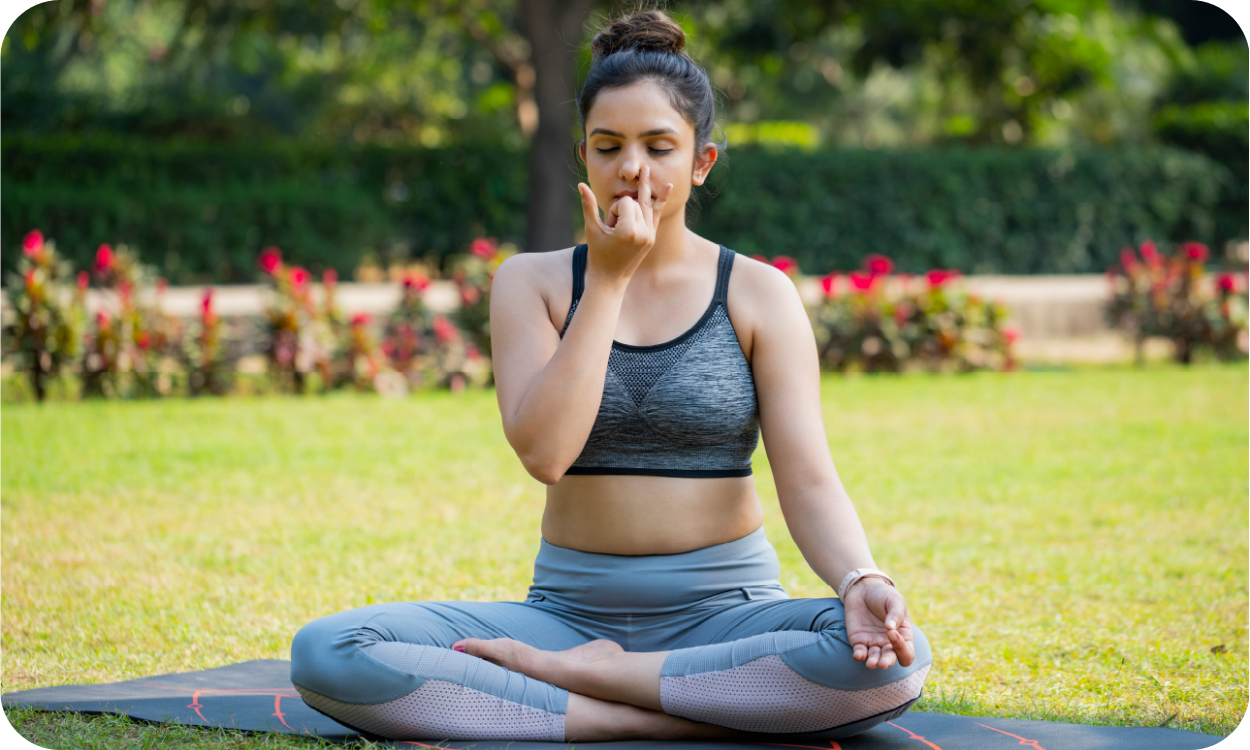
Yoga & Breathwork
Create Stability Through Movement and Breath
Gentle, grounding activities like walking, chi gong, or tai chi are ideal for balancing Vata. Avoid intense exercises that deplete energy. Practice grounding yoga poses such as Mountain pose, Tree pose, Child’s pose, and Cat-Cow stretch, finishing with Shavasana. Regularly engage in Nadi Shodhana (Alternate Nostril Breathing) to calm your mind.
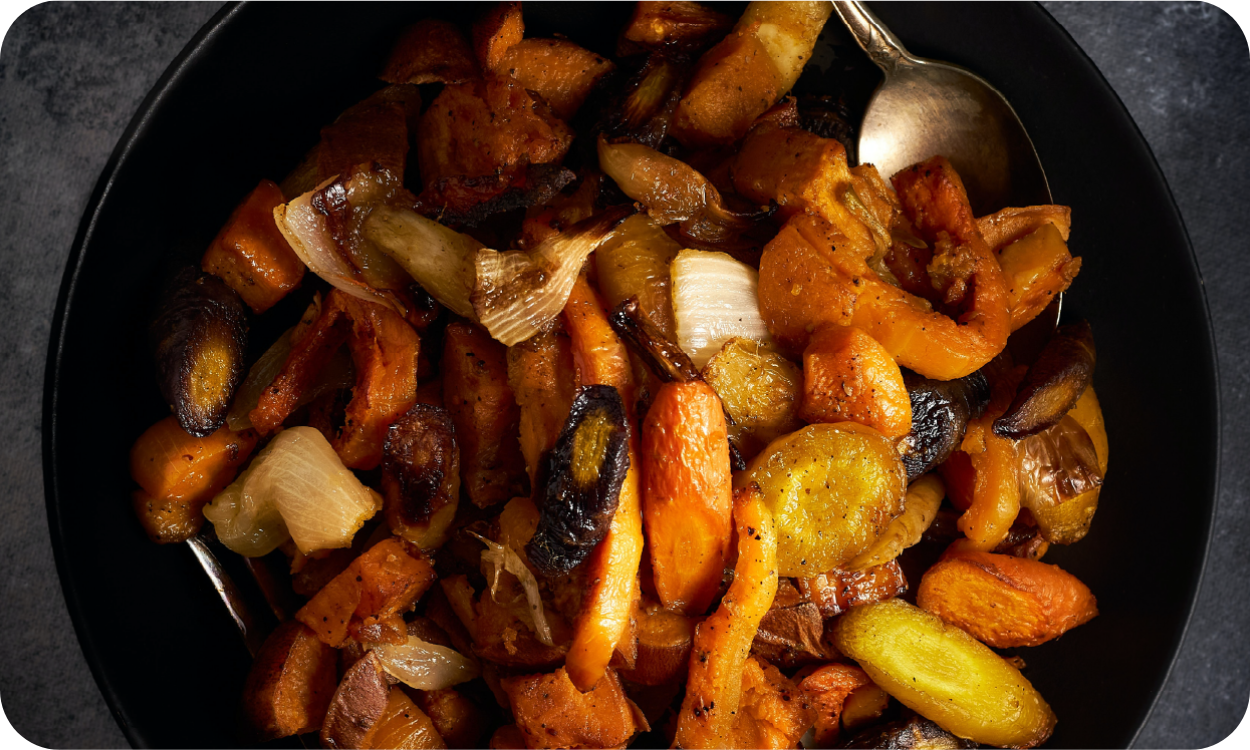
Vata Diet
Nourish Your Body with Warmth
Support Vata with warm, nourishing foods and drinks. Enjoy herbal teas, stewed fruits, and hearty soups with spices like cumin, ginger, and cinnamon to promote digestion and energy.
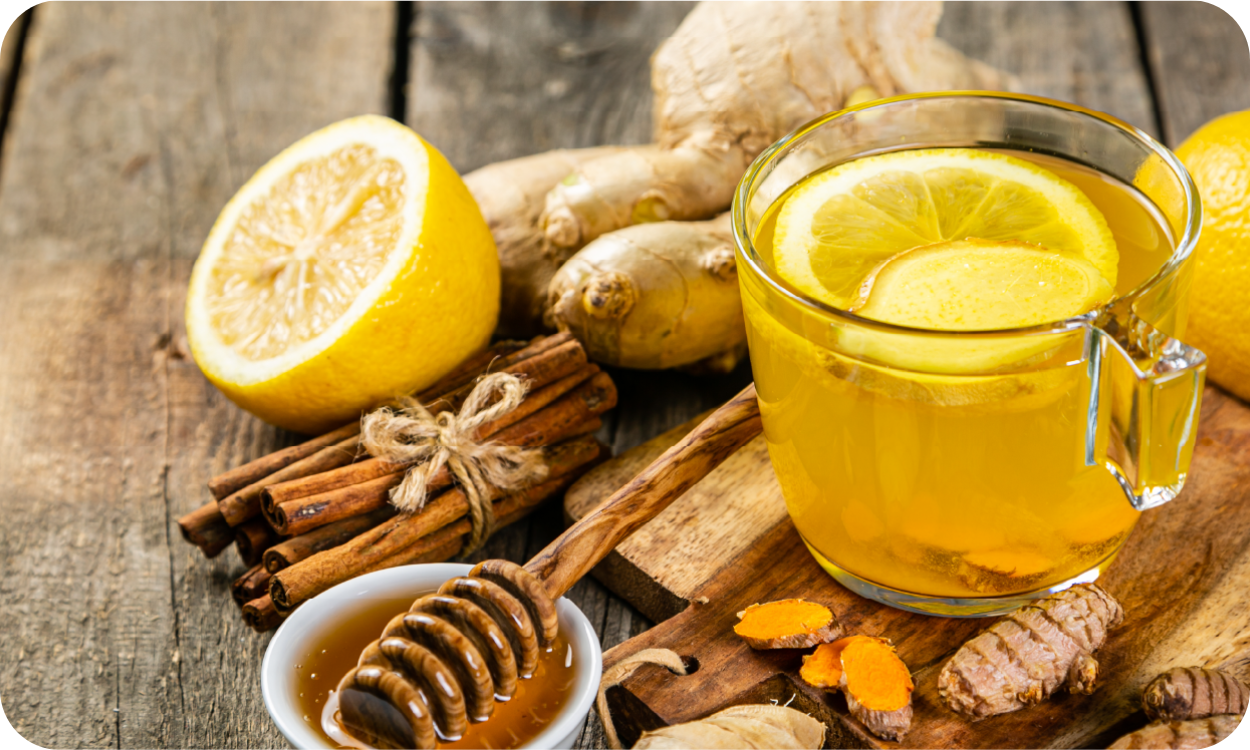
Vata Herbal Remedies
Restore Balance with Ayurveda’s Healing Power
Soothe Vata dosha with teas or tonics made from Ashwagandha, Ginger, Tulsi, Turmeric, and Cinnamon. These Ayurvedic herbs provide warmth, improve digestion, and promote relaxation.
All Eyes Are on Ciamor

FAQs About Vata Dosha
Vata Dosha symbolizes movement and the elements of air and space. It governs circulation, breathing, and mobility in the body, as well as creativity and adaptability in the mind.
Physically: Slender, energetic, prone to dry skin
● Mentally: Creative, imaginative, quick learners
● Emotionally: Enthusiastic but can feel restless or anxious
Diet: Favor warm, nourishing, and grounding foods
● Lifestyle: Stick to a regular routine with calming practices
● Self-care: Use hydrating and soothing skincare products
Winter’s cold and dry qualities naturally aggravate Vata, leading to potential imbalances like dry skin, restlessness, and fatigue.
During winter, focus on warmth:
● Skincare: Daily abhyanga with warm sesame oil and use hydrating
products with ingredients like Aloe vera and Shatavari
● Diet: Prioritize warm soups, stews, and herbal teas
● Lifestyle: Incorporate calming yoga and breathwork
Prakriti, as a physical dosha, stays the same throughout life. As with each stage of life, increasing Vata during our older years is also natural. To maintain balance, regularly
reassess your dosha
In Ayurveda, doshas are biological energies that govern physical and mental processes in the
body. They are derived from the five elements: ether, air, fire, water, and earth. The three
doshas are:
Vata Dosha (Ether + Air)
● Characteristics: Vata individuals are typically slim, energetic, and creative. They
have a quick mind, light frame, and variable energy levels.
● Imbalance Symptoms: Dry skin, anxiety, restlessness, constipation, and irregular
sleep patterns.
Pitta Dosha (Fire + Water)
● Characteristics: Pitta individuals tend to have a medium build, sharp intellect, and
strong metabolism. They are natural leaders and goal-oriented.
● Imbalance Symptoms: Skin rashes, acidity, irritability, and overheating.
Kapha Dosha (Water + Earth)
● Characteristics: Kapha individuals are often solid, calm, and nurturing. They have
strong immunity and stamina but may gain weight easily.
● Imbalance Symptoms: Lethargy, weight gain, congestion, and sluggish digestion.
In Ayurveda, Vata dosha is considered the primary dosha because it governs movement and
activities within the body, influencing both Pitta and Kapha. It controls the flow of blood,
nerve impulses, and digestion, which are essential for Pitta's metabolic functions and Kapha's
structural stability. When Vata is imbalanced, it can disrupt Pitta's heat and digestion, leading
to acidity or Kapha's stability, causing congestion or lethargy. For Vata individuals, staying
grounded and balanced is key, as any Vata imbalance can magnify disruptions in the other
doshas.
Grounding poses like Mountain pose, Tree pose, and Child’s pose are ideal. End with
Shavasana and practice Nadi Shodhana pranayama for calming effects.
Symptoms of Vata imbalance may include:
● Skin issues: Dryness, flakiness, or sensitivity
● Mental: Restlessness, anxiety, or forgetfulness
● Physical: Irregular digestion, fatigue, or poor circulation
Ayurveda emphasizes grounding and warming practices for Vata during colder seasons to maintain balance and avoid dryness and restlessness.





